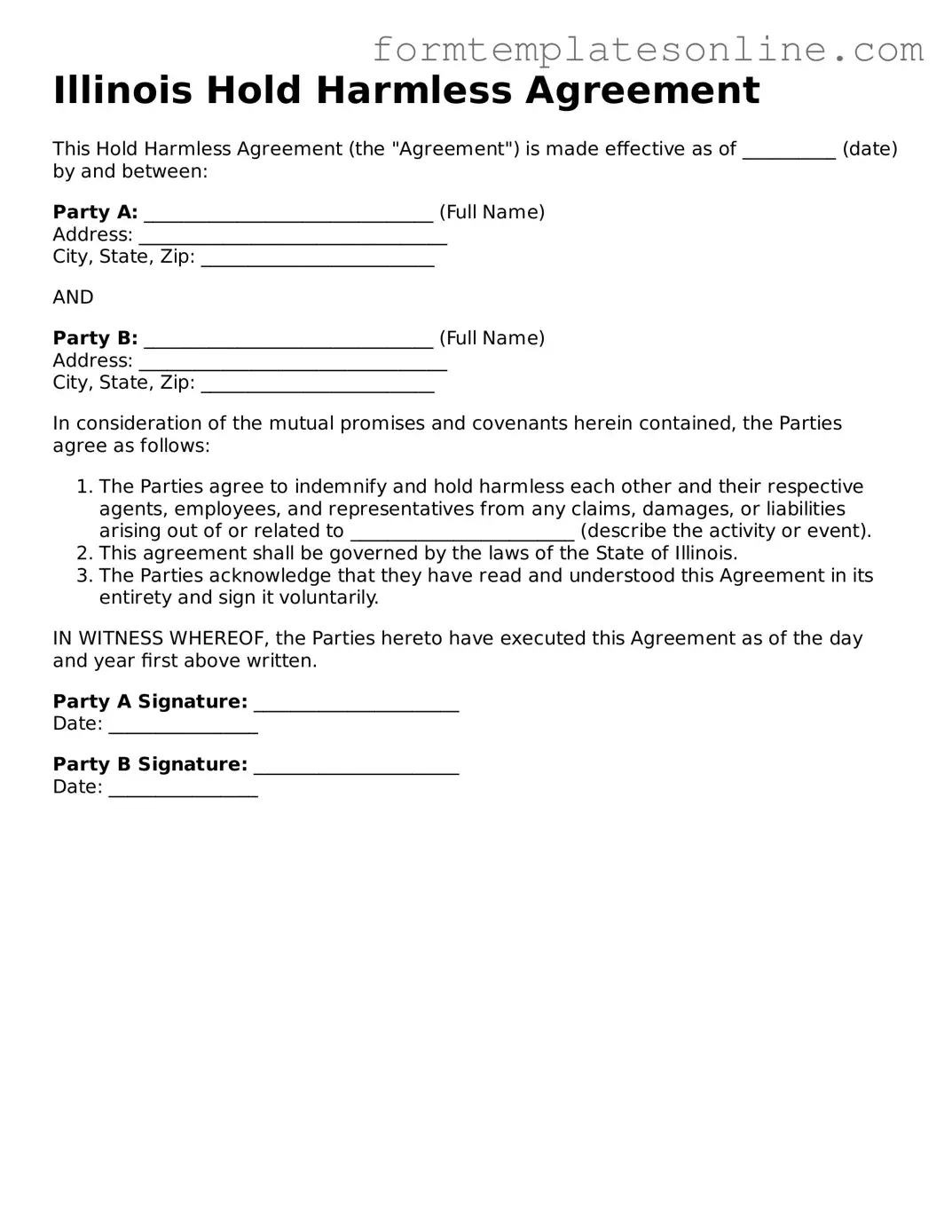What is an Illinois Hold Harmless Agreement?
An Illinois Hold Harmless Agreement is a legal document that protects one party from liability for certain risks associated with an activity or event. By signing this agreement, one party agrees not to hold the other party responsible for injuries or damages that may occur during that activity or event. This is commonly used in various situations, such as events, construction projects, or when renting facilities.
Who typically uses a Hold Harmless Agreement?
Hold Harmless Agreements are often used by businesses, event organizers, property owners, and contractors. For instance, if you’re hosting a community event at a park, you might require participants to sign this agreement to ensure that you won’t be held liable for any accidents that occur during the event. Similarly, contractors may ask subcontractors to sign this agreement to limit their liability for workplace injuries.
Is a Hold Harmless Agreement legally binding in Illinois?
Yes, a Hold Harmless Agreement can be legally binding in Illinois, provided it meets certain criteria. The agreement must be clear, voluntary, and specific about the risks involved. Both parties should fully understand the terms before signing. If the agreement is deemed overly broad or unconscionable, a court may not enforce it.
What should be included in a Hold Harmless Agreement?
A well-drafted Hold Harmless Agreement should include several key elements. These typically consist of the names of the parties involved, a clear description of the activity or event, the specific risks being assumed, and a statement that the signer understands these risks. It’s also wise to include a clause about governing law, which specifies that Illinois law will apply to the agreement.
Can a Hold Harmless Agreement protect against all types of liability?
No, a Hold Harmless Agreement cannot protect against all types of liability. Generally, it cannot shield a party from liability arising from gross negligence or willful misconduct. Courts often scrutinize these agreements, especially if they attempt to absolve a party from responsibility for serious harm or illegal activities.
How does a Hold Harmless Agreement differ from insurance?
While both a Hold Harmless Agreement and insurance provide some level of protection against liability, they serve different purposes. A Hold Harmless Agreement shifts the risk from one party to another, while insurance provides financial coverage for losses or damages. It’s common for businesses to use both tools to ensure comprehensive protection against potential liabilities.
Do I need a lawyer to draft a Hold Harmless Agreement?
While it’s possible to create a Hold Harmless Agreement without legal assistance, consulting a lawyer is highly recommended. A legal professional can help ensure that the agreement complies with Illinois law and adequately protects your interests. This is particularly important if the agreement involves significant risks or complex terms.
How can I enforce a Hold Harmless Agreement?
To enforce a Hold Harmless Agreement, the terms must be clear and unambiguous. If a dispute arises, you may need to present the signed agreement in court to demonstrate that the other party agreed to assume the risks outlined. Having a well-drafted document and clear communication can significantly strengthen your position in any potential legal disputes.
What happens if someone refuses to sign a Hold Harmless Agreement?
If someone refuses to sign a Hold Harmless Agreement, you may need to consider whether to proceed with the activity or event. Depending on the situation, you might choose to implement additional safety measures or require alternative forms of liability coverage. Ultimately, the decision will depend on the level of risk involved and your comfort with that risk.
Can a Hold Harmless Agreement be revoked?
Once signed, a Hold Harmless Agreement generally cannot be revoked unilaterally. However, both parties may agree to amend or terminate the agreement if circumstances change. It’s crucial to document any modifications in writing to avoid misunderstandings later on.
